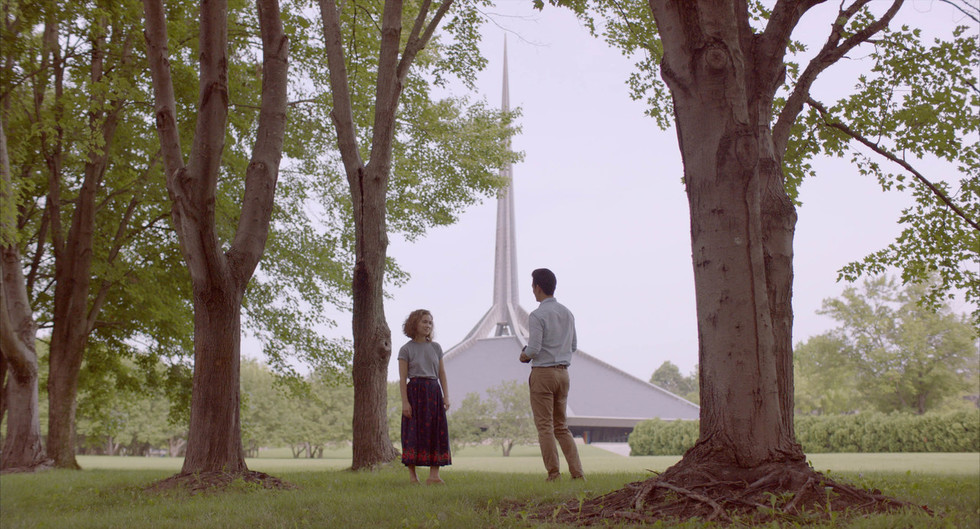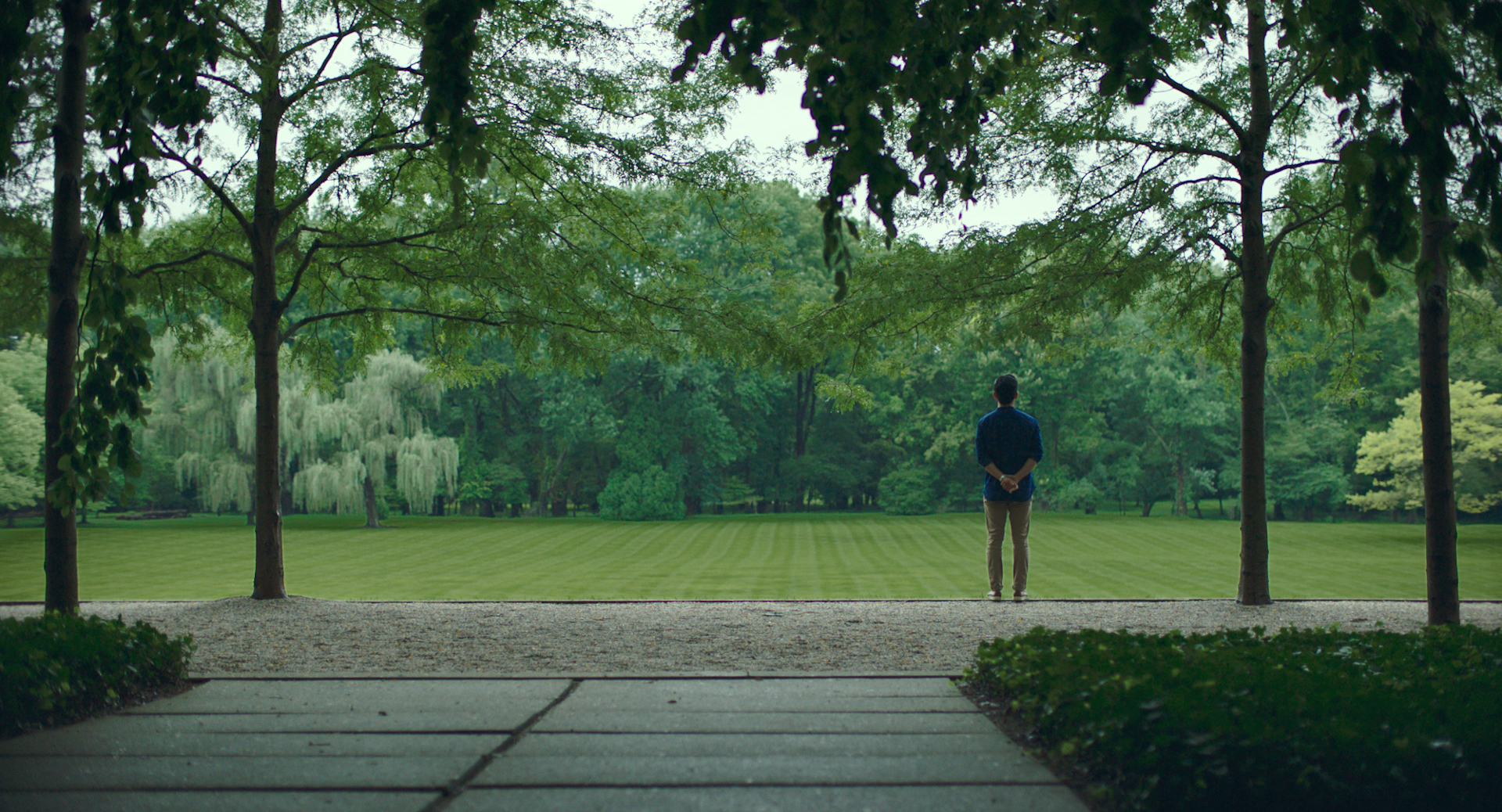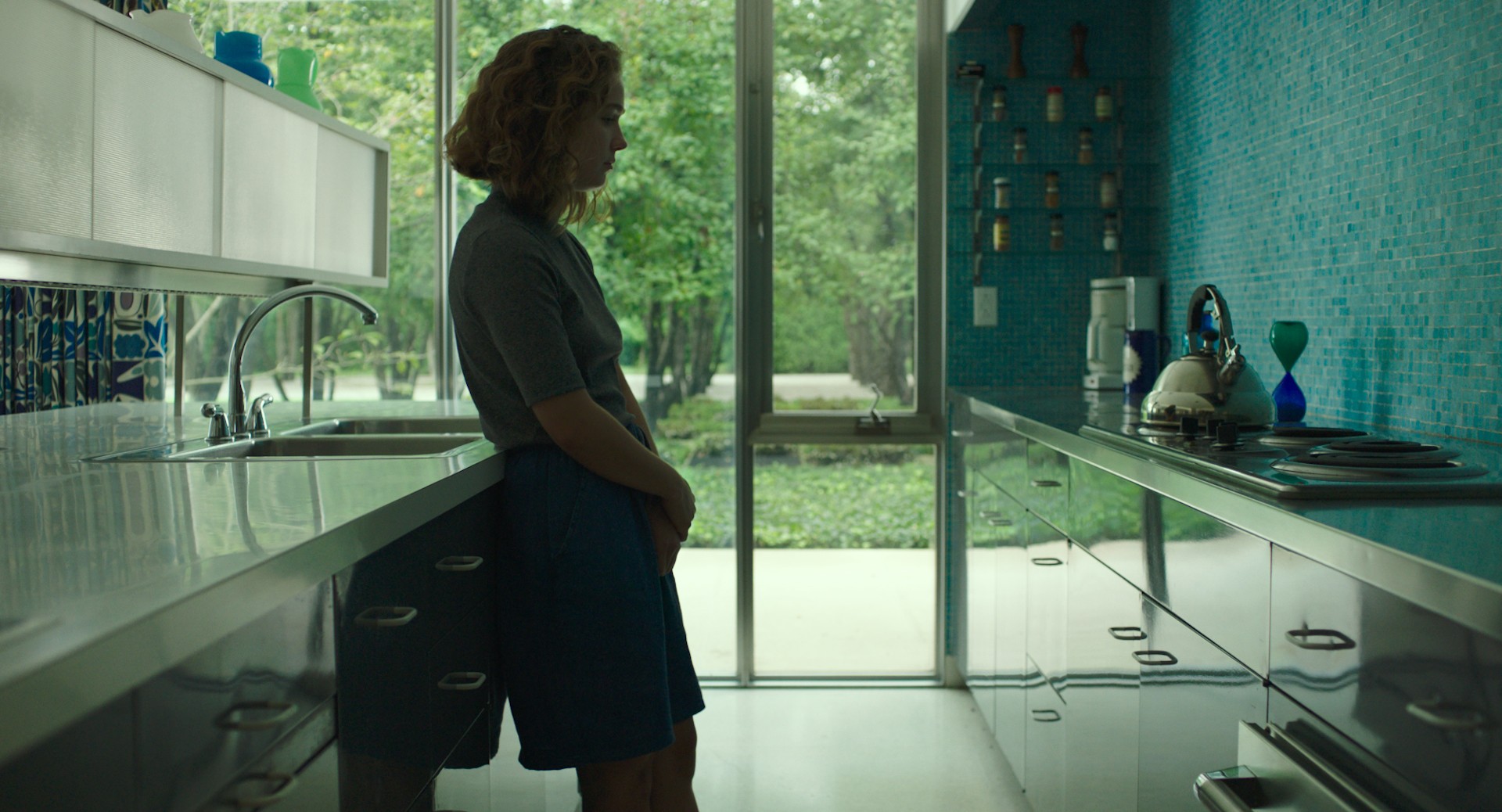
BY MATTHEW ENG |
COLUMBUS is a Thing of Beauty and One of 2017's Most Distinctive Film Debuts
In his feature directorial debut, Kogonada has crafted a fictional film with the honest, tough-minded insights of a documentary or personal essay.

The continued mainstreaming of American independent cinema occasionally causes me to forget that works like Columbus are still being made by ambitious filmmakers who think in images and ideas, with nary a care for commercial prospects. Columbus is the emotional and entrancing feature debut of writer-director Kogonada, a video essayist who has refracted and reflected upon the works of auteurs ranging from Bergman to Bresson in pieces for the Criterion Collection. This analytical background likely accounts for the startling presence of active thought that pulses through the film’s every scene, in which the lives of Casey (Haley Lu Richardson), a part-time librarian from southeastern Indiana, and Jin (John Cho), a literary translator based in Korea, intersect for a matter of days in the titular city.
The premise, on paper, recalls the Before Trilogy, Richard Linklater’s heart-stopping, moment-to-moment exploration of one couple’s evolution through different cities, decades, and personal attachments. But Columbus is not a love story — or, at least, not one defined by romance. And while Kogonada has scripted many conversations in which his two protagonists divulge personal histories, glory in the city’s striking architecture, and intimately get to know one another, the intended effect of these scenes is less quixotic than conceptual. Unlike Céline and Jesse, Casey and Jin aren’t purely passing time in between the larger moments of their separate everyday existences. Jin’s father, a revered architectural scholar, has taken ill while visiting Columbus as a guest lecturer, taking Jin away from his work and leaving his estranged son in an extended state of uncertainty. Meanwhile, Casey, compelled by a similar sense of filial duty, has put her college studies indefinitely on hold to care for her mother (Michelle Forbes), a recovering drug addict who may or may not be more self-sufficient than Casey is willing to acknowledge.
With their reliance on stock roles as overused as the emotionally-withholding father and the self-harming mother, each character’s personal journey might betray a familiarity that borders on outright cliché. But the rare magic of Columbus, a human drama infused with a spooky, out-of-body ethereality, lies in its confident and ingenious execution. From the beginning, Kogonada’s camera eye, in tandem with that of DP Elisa Christian, is trained firmly on the innovative and brilliantly-framed architecture of Columbus, a requisite sightseeing destination for many of the art’s aficionados. This aesthetic interest could possibly run the risk of remaining a surface-dwelling visual construct, but it is lent deep and abiding credence from the characters created by Kogonada, whose architectural obsession organically becomes their own. As Casey acquaints Jin with her landlocked city’s most imposing structures, including the ones that hold personal, sometimes life-altering significance for her, the two respond to these constructions (and each other) with a palpable meld of unquenchable thought and instinctive feeling. At one point, Jin, who is himself no stranger to the lure of architecture, makes light of his father’s interest in finding works that embodied “modernism with a soul,” a sly and suitable descriptor for Kogonada’s own filmmaking style. But rather than falling back on style as an eye-catching crutch, Kogonada is ultimately interested in asking a far weightier question about humans’ fascination with lifeless edifices, one that initially seems unanswerable: Do we define spaces or do spaces define us?

This could have all made for an overly cerebral exercise were it not for the lead actors enlisted to bring these characters to quiveringly curious life. Throughout Kelly Fremon Craig’s fantastically infectious coming-of-age comedy The Edge of Seventeen, I was immediately taken with Richardson, who, as Hailee Steinfeld’s good-hearted ex-best friend, provided abundant personality and inbuilt empathy to a potentially inappreciable character who was purposely but all too quickly relegated to the sidelines. In Columbus, Richardson, whose face works as a pleasurably porous conveyer of emotions, rapidly emerges as one of our most promising young actresses, laying herself heartbreakingly bare as she accesses and quells her inner life with the skill of a performer far beyond her years. She is gorgeously matched by Cho, who is freed here from the creative constraints of studio tentpoles and impresses with unimpeachable gravitas in the profoundly-drawn leading role with which we always knew he could excel. Jin, as written, is a fundamentally obdurate personality, but the measured warmth of Cho’s acting nullifies the character’s coldness without denying his capacity for callousness. Meanwhile, Parker Posey, playing a deferential former student of Jin’s father who also acts as hesitant confidante to Jin himself, brings an alluringly lucid quality to the sort of character that Parker Posey never gets cast as, meaning she is neither an oddball nor a flake.
Columbus is not a crowded film by any means. In several shots, it actually appears as if the spaces that Casey and Jin explore, if not the entire city itself, have been emptied out, deserted but for these two souls — one transitory, the other rooted, each seeking distraction but really looking for meaning and fulfillment. And yet we never get the impression that Casey and Jin are the only two people on earth, nor do the intimates and strangers who surround and cross their paths ever feel like negligible figures. Kogonada’s own expressive editing manages to connect actions and characters whose oblique relations exist, unspoken, in the deepest recesses of the script. He proves uniquely adept at interrogating notions of familial and cultural responsibility both on the page but, more importantly, beneath or maybe above the text. His cuts trace a thoughtful symmetry between characters as disparate as Casey’s mother and Jin’s faceless father, each of them a specter haunting the film in very different ways. These same cuts also bear a tender regard for realistic silence between characters and the precious power such quiet can exert. In an era of loquacious indies with diminished craftsmanship, Kogonada is the rare filmmaker who understands that cinematic silence is not the absence of progression but the consideration of it.
From the expert contrasting of residential and touristic spaces by production designer Diana Rice to the elegantly subdued score by ambient rock band Hammock that creates a sonic world which ebbs and flows with the spirits of those on screen, every element of this sparkling debut has been crafted with evident care and deliberation right until its humbling and mythopoetic conclusion. Columbus does not end with a deathbed confessional, a starry-eyed epiphany, nor a definitive reconciliation. The fractured bonds that began the film remain irreparable. Gnawing regrets go unspoken. And the film’s finale entails a gentle reversal of roles that posit Casey and Jin not as soulmates but fellow travelers who eventually come to open personal and physical passageways for one another.

In its final moments, Columbus subtly plays with perception by revisiting a series of stark facades and polished, gleaming interiors that we have glimpsed throughout the film in shots that resonated with a hushed reverence. At first glance, they were alien and formal, as are most new objects and areas. But in the evocatively reworked montage that closes the film, they have shifted in our minds without necessarily changing at all in their appearance. Instead, they now brim with recollections of the characters who have lived and wandered among them for one fleeting period in time, characters who passed through their halls and shadows but who now spiritually shadow and suffuse the structures themselves. They have made these manmade spaces their own and quietly answered the question that once seemed irresolvable: Do we define spaces or do spaces define us? In Columbus, spaces are defined by those who build them but also, inevitably, by those who inhabit them.
Columbus is now playing at New York City's IFC Center.

